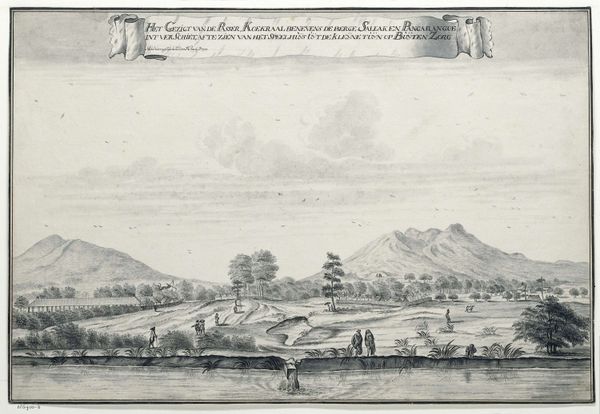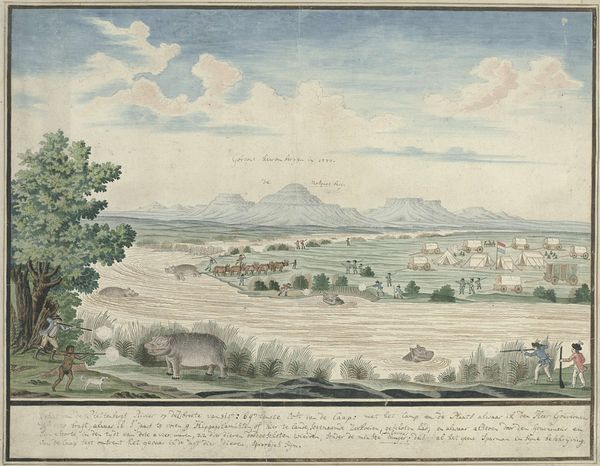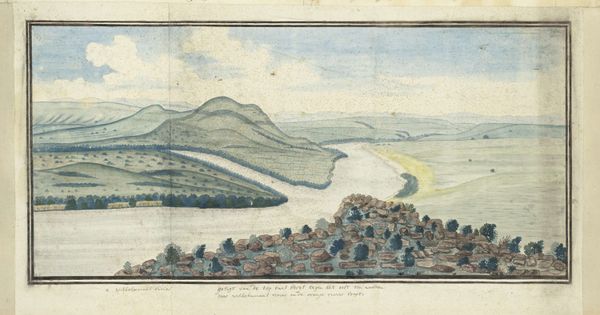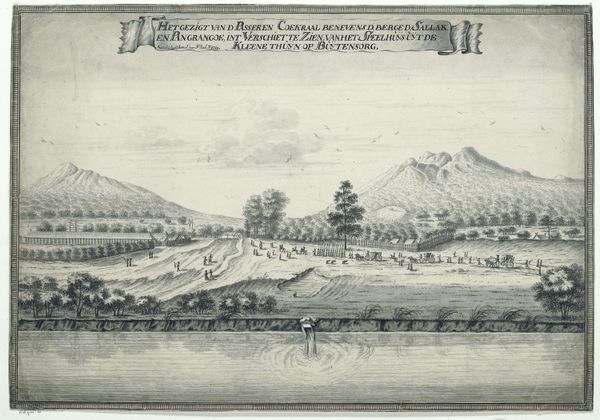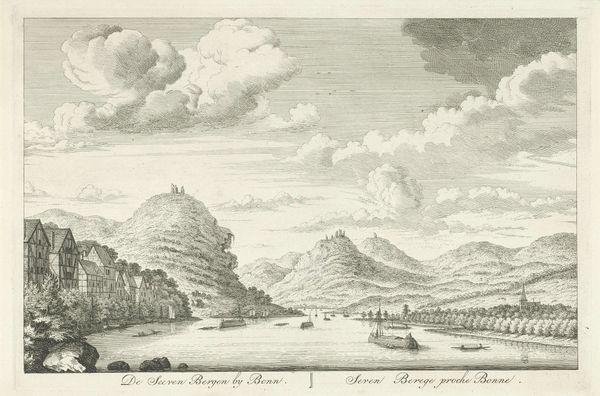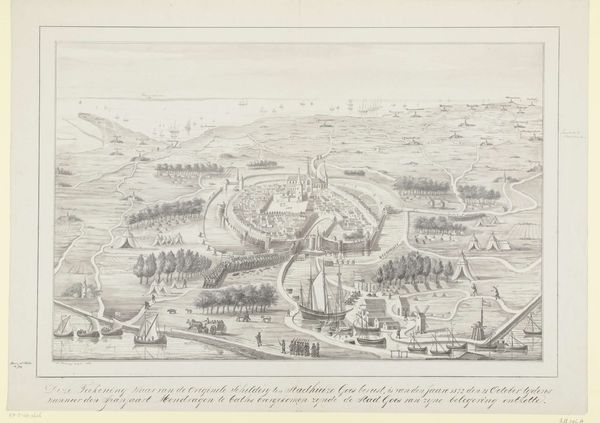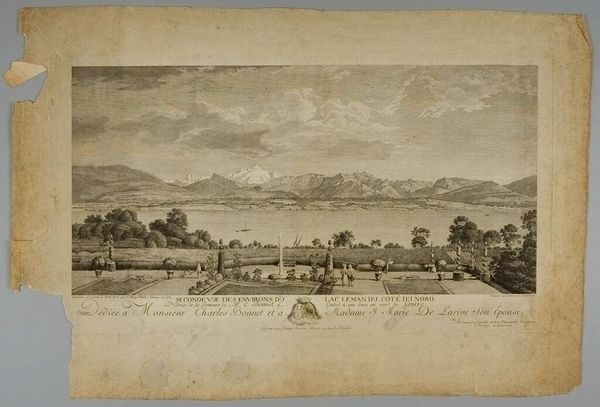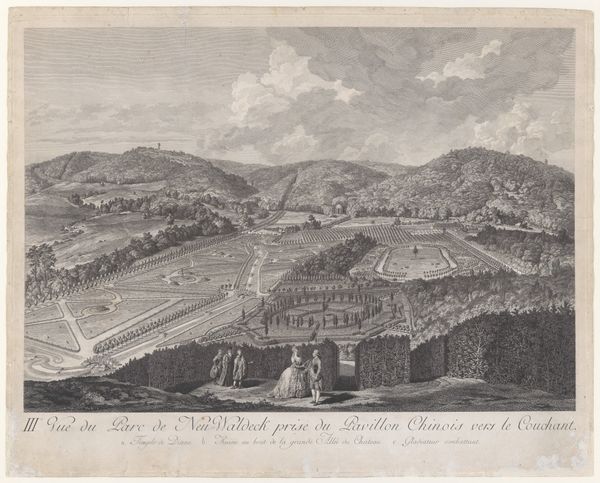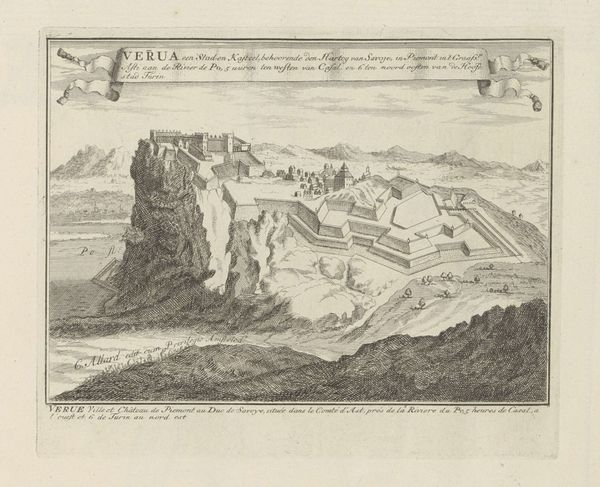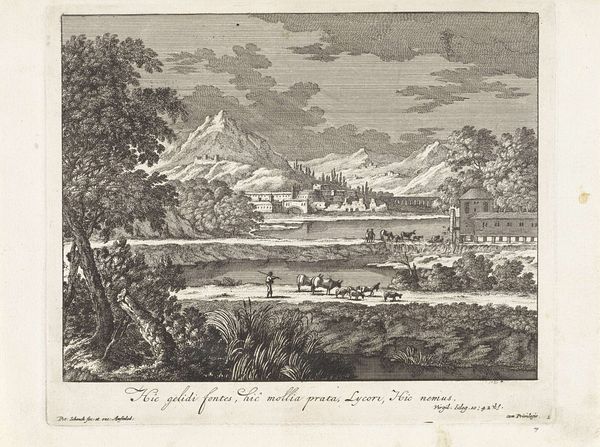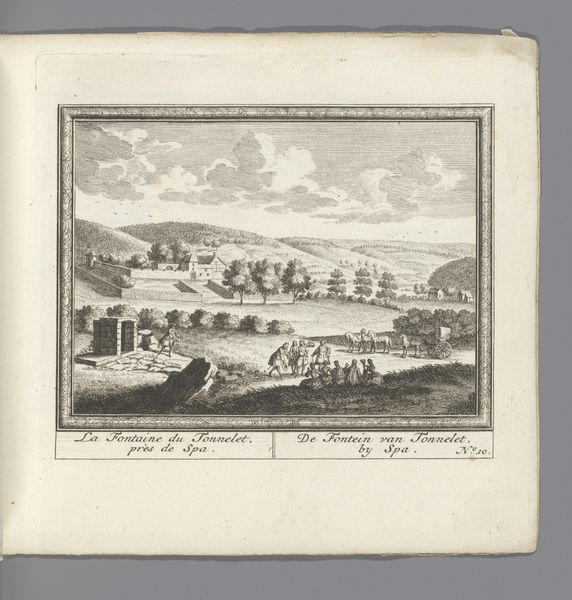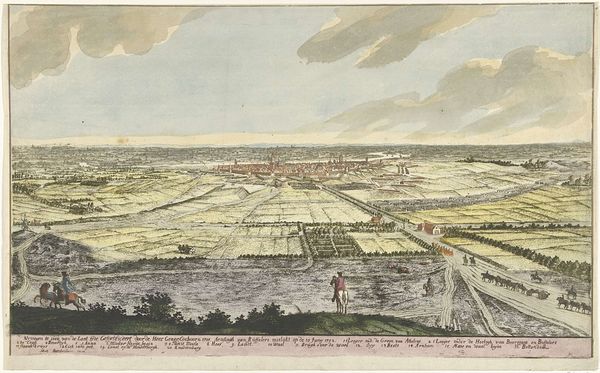
Kweekvlei,the stock-farm of the widow of Zacharias de Beer, east of the Gamka river Possibly 1778 - 1779
0:00
0:00
Dimensions: height 427 mm, width 480 mm, height 395 mm, width 480 mm
Copyright: Rijks Museum: Open Domain
Curator: Immediately, I'm struck by the open space and light of this watercolour. There's a serenity in the scene, yet something slightly unsettling in its staged composition. Editor: You’ve touched on the key points. We're looking at a work by Robert Jacob Gordon, titled "Kweekvlei, the stock-farm of the widow of Zacharias de Beer, east of the Gamka river." It was created around 1778-1779. Gordon was a military commander of the Dutch East India Company, keenly interested in natural history. Curator: Yes, and his position undoubtedly shapes this portrayal. The scene presents an image of a thriving colonial landscape. Look at the meticulously laid-out fields and orchards, all under the watchful eye of the widow’s house, itself a clear emblem of European settlement. Editor: Notice the depiction of those fields as emblems; they carry a potent symbolism, suggesting a landscape tamed and controlled through colonial enterprise. The workers in the fields, though small in scale, contribute to this narrative of organized productivity. Curator: That brings an intriguing tension to the piece. It presents a vision of prosperity rooted in very specific historical circumstances. I wonder what meanings were available to those original viewers who perhaps recognised what and whom was being displaced here? Editor: Precisely. Gordon's image is a piece of propaganda; by emphasizing order and productivity, it legitimizes colonial expansion and perhaps overlooks the dispossession that accompanied it. Curator: It highlights how artistic representations, even in seemingly simple landscapes, are laden with social and political significance, and that continues to impact their reception. Editor: It certainly reminds us to examine these historical landscapes through a critical lens, recognizing them as constructed narratives shaped by the power dynamics of their time. Thank you. Curator: My pleasure. Understanding the cultural weight in these images allows for a richer experience of their power.
Comments
No comments
Be the first to comment and join the conversation on the ultimate creative platform.
